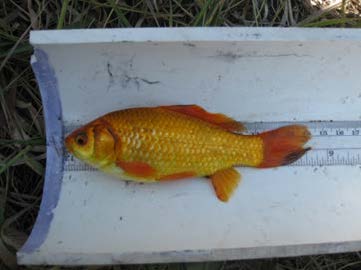|
You are viewing ARCHIVED content published online before January 20, 2025.
Please note that this content is NOT UPDATED, and links may not work. For current information,
visit https://www.nps.gov/aboutus/news/index.htm.

NPS
Contact: Public Affairs Office, 307-739-3393 Public Review and Comment Sought on Proposal to Control Exotic Species in Kelly Warm Spring MOOSE, WY—Grand Teton National Park is seeking public review and comment on a proposal to protect native aquatic communities by controlling non-native species in Kelly Warm Spring, located about one mile northeast of Kelly, Wyoming. This spring has been a target for illegal dumping of aquarium fish since the 1940s. A number of tropical and warm water aquatic species that are harmful to native fish, and capable of surviving a range of water temperatures, persist in both the spring and its outflow areas of Savage Ditch and Ditch Creek. Park managers will consider several alternatives to remove exotic species, such as netting and trapping, electrofishing, and piscicide treatment. Comments will be accepted through September 3, 2015. In consultation with Wyoming Game and Fish Department, park biologists have identified piscicide treatment as the preferred alternative for removing non-native species from Kelly Warm Spring and its outflow area. The use of rotenone—an EPA-approved piscicide—would likely remove all of the unwanted non-native fish in one treatment. Depending on results, reapplication may be needed for one or two additional years. In contrast, capture efforts using nets and traps, or electrofishing would fail to fully remove unwanted species and would require repeated treatments for an indefinite period of time. Biologists believe it is feasible to eradicate the exotic species with minimal harm to native plants and animals. Rotenone treatments of this sort have been safely used in a number of streams throughout the Greater Yellowstone Ecosystem and across the U.S. The concentration of rotenone applied would not persist in the environment, would not impact the aquatic community in the long-term or infiltrate ground water, and would be virtually non-toxic to organisms without gills. Proposed treatments would be completed in just one day during the fall season when stream discharges are low, thereby limiting the size of the treatment area and downstream effects. Fisheries would be monitored and restocked with native fish as needed. The area would be closed to the public during piscicide treatments. Kelly Warm Spring has had a long history of illegal aquarium dumping. Records of guppies date back to the 1940s. In recent years, goldfish, madtoms, and bullfrog tadpoles originating from the warm spring have been found in Ditch Creek within 10 meters of the Snake River. While no exotic species have been found in the Snake River to date, it is likely they are present. The aquarium fish are a detriment to native fish—including Snake River cutthroat trout, bluehead suckers, Utah suckers, Utah chubs, redside shiners, longnose and speckled dace—because they prey on their eggs and juveniles, deplete the food sources used by native fish, and spread disease. Public feedback will help park managers identify issues and concerns, and determine the appropriate level of environmental analysis. Comments can be made online at https://parkplanning.nps.gov/kellywarmspring, or hand delivered to park headquarters in Moose, Wyoming, or mailed to: Grand Teton National Park, Attn: Carol Cunningham, PO Box 170, Moose, WY 83012. —— |
Last updated: August 5, 2015
